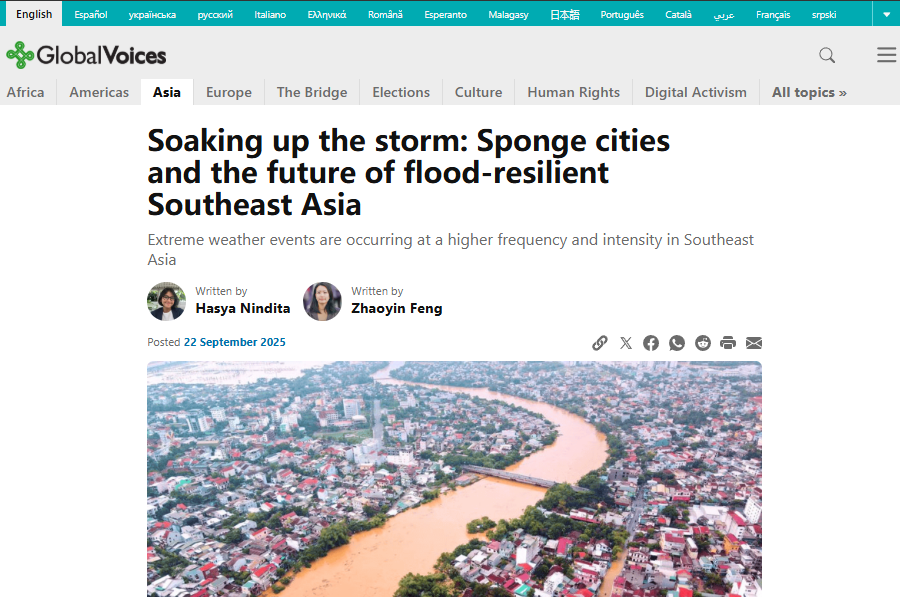Global Voices: Soaking up the storm - Sponge cities and the future of flood-resilient Southeast Asia

Extreme weather events are rising in both frequency and severity across Southeast Asia, aggravating urban flooding in major megacities. Problems stem from outdated infrastructure, rapid urbanization, impermeable surfaces, low-lying coastal locations, and drainage systems unable to cope with intense precipitation. In China, the concept of “sponge cities”—urban design that emphasizes absorption, retention, infiltration, and purification of rainwater via green roofs, permeable pavements, wetlands, and restored natural waterways—was adopted in 2013 as a national strategy. This model has shown benefits in stormwater runoff control and habitat restoration, but many pilot projects remain small-scale, and challenges persist in scaling up, coordinating government departments, and coping with record-breaking rainfall events.
In Southeast Asia, sponge city ideas are being considered and implemented in some cases. For example, Bangkok’s Benjakitti Forest Park—which was built on a former industrial site—effectively resisted a 10-year rainfall event, remaining largely dry while surrounding areas flooded. Indonesia’s planned new capital, Nusantara, is being designed with sponge city principles: integrating open green spaces, hydrological connectivity, porous surfaces, green roofs, etc. However, there are hurdles: high costs, tight urban space, aging drainage infrastructure, lack of political coordination, and uncertainty whether current designs can withstand increasing severity of climate change–driven weather extremes.
......
